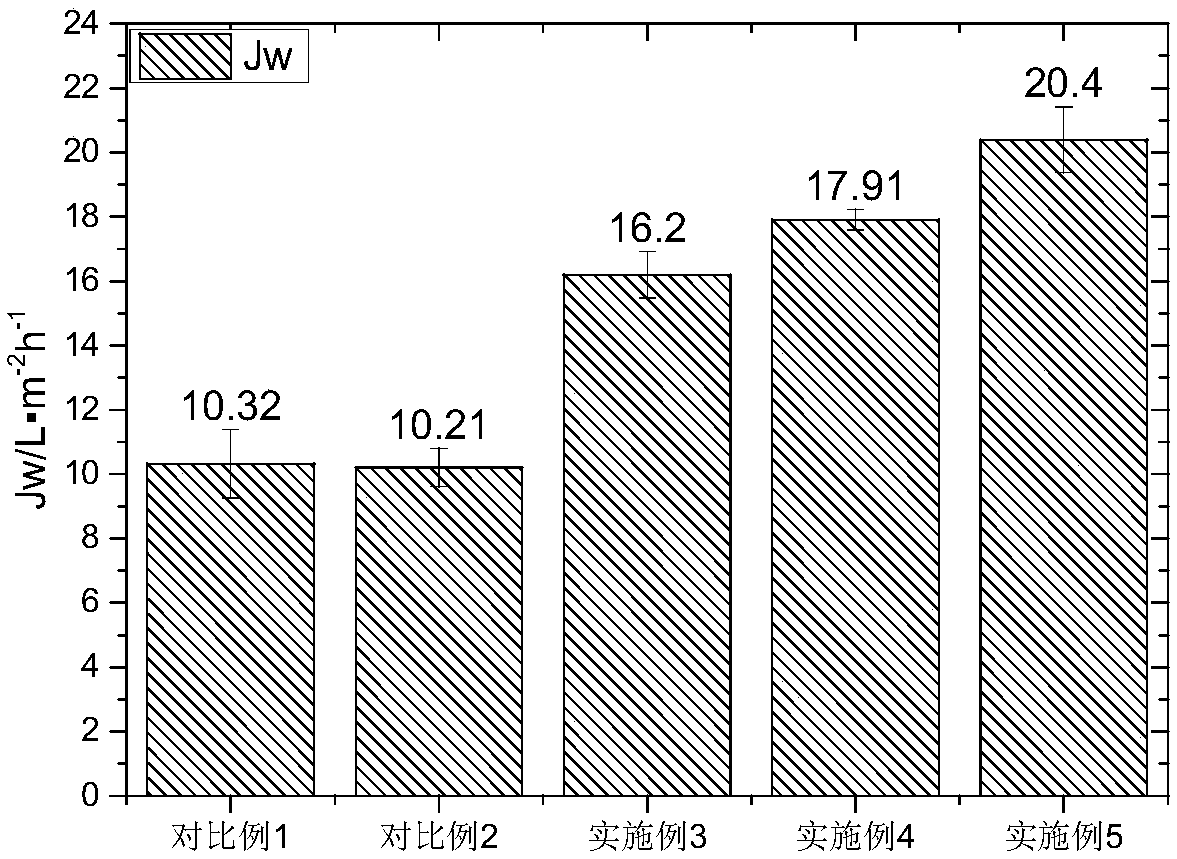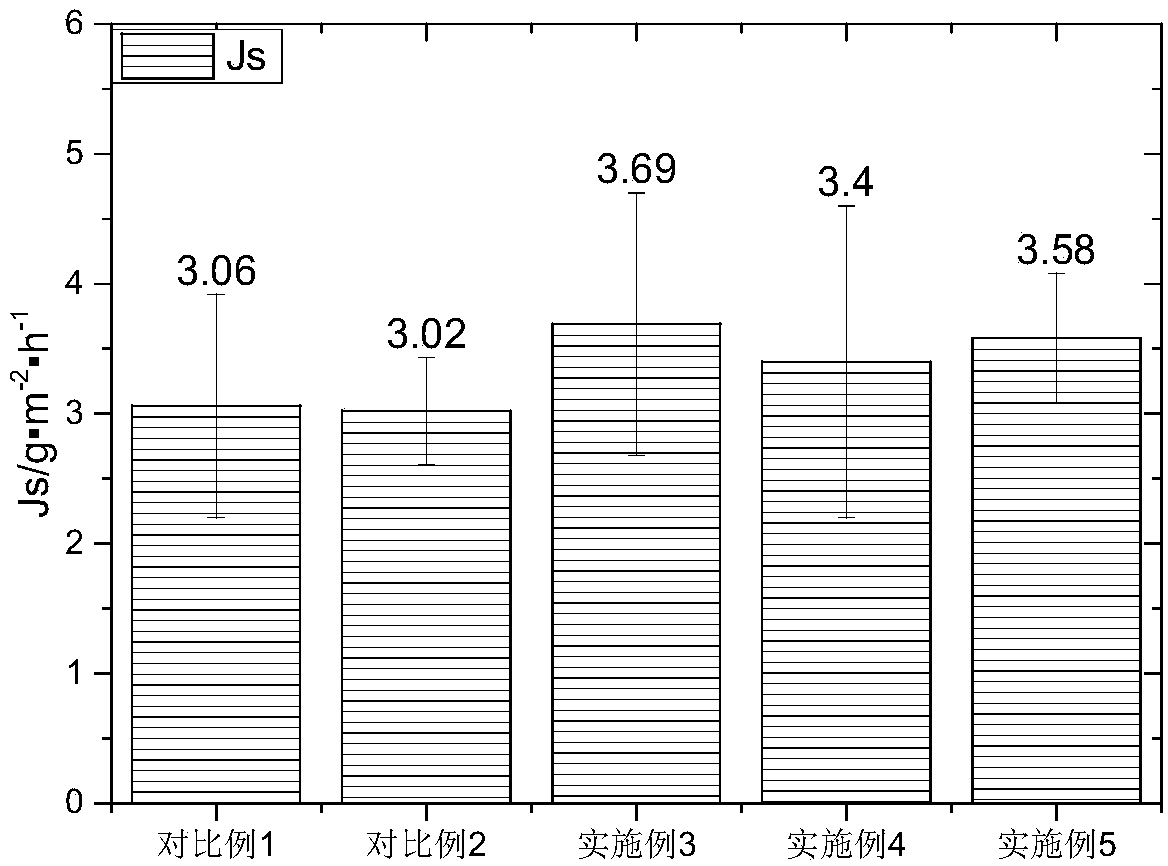Method for improving water flux of composite forward osmosis membrane
A forward osmosis membrane and water flux technology, applied in the field of membrane separation, can solve the problems of large tortuosity of finger-like pore structure, lack of large finger-like pore structure, low water flux of forward osmosis membrane, etc. Quantity, reducing the phenomenon of internal concentration polarization, the effect of simple method
- Summary
- Abstract
- Description
- Claims
- Application Information
AI Technical Summary
Problems solved by technology
Method used
Image
Examples
Embodiment 1
[0055] Example 1: basement membrane soaked in 30% DMAc for 1 hr
[0056] Preparation method: Soak the basement membrane prepared in step (3) of Comparative Example 1 with a volume ratio of 30% DMAc aqueous solution for 1 hour, take it out, and fully wash it in deionized water. The rest of the steps are the same as in Comparative Example 1. Wash thoroughly with water and store in 1% sodium bisulfite solution.
[0057] Performance: With 1M NaCl and deionized water as the draw liquid and raw material liquid, the water flux of the forward osmosis membrane is 12.60±0.50LMH, the reverse salt flux is 3.21±0.50gML, and the brine ratio is 0.25g / L.
[0058] Structure: The membrane is composed of a porous support layer and a dense separation layer. The thickness of the spongy layer on the support layer decreases, but the change is not great.
Embodiment 2
[0059] Embodiment 2: The basement membrane is soaked in 50%DMF for 30min
[0060] Preparation method: Soak the base membrane prepared in step (3) of Comparative Example 1 in 50% DMF aqueous solution for 30 minutes, take it out, and wash it fully in deionized water. Rinse thoroughly with deionized water and store in 1% sodium bisulfite solution.
[0061] Performance: With 1M NaCl and deionized water as the draw solution and raw material solution, the water flux of the forward osmosis membrane is 14.90±0.61LMH, the reverse salt flux is 3.61±1.01gMH, and the brine ratio is 0.24g / L.
[0062] Structure: The membrane is composed of a porous support layer and a dense separation layer. The large finger-like pore structure in the membrane increases, and the thickness of the spongy layer in the support layer becomes smaller.
Embodiment 3
[0063] Embodiment 3: basement film soaks 1hr in 50%DMAc
[0064] Preparation method: Soak the base membrane prepared in step (3) of Comparative Example 1 in 50% DMAc aqueous solution for 1 hour, take it out, and wash it fully in deionized water. Rinse thoroughly with deionized water and store in 1% sodium bisulfite solution.
[0065] Performance: With 1M NaCl and deionized water as the draw liquid and raw material liquid, the water flux of the forward osmosis membrane is 16.20±0.72LMH, the reverse salt flux is 3.69±1.01gMH, and the brine ratio is 0.23g / L.
[0066] Structure: The membrane is composed of a porous support layer and a dense separation layer. The thickness of the spongy layer in the support layer becomes smaller, and the large finger-like pore structure in the membrane increases.
PUM
| Property | Measurement | Unit |
|---|---|---|
| percent by volume | aaaaa | aaaaa |
Abstract
Description
Claims
Application Information
 Login to View More
Login to View More - Generate Ideas
- Intellectual Property
- Life Sciences
- Materials
- Tech Scout
- Unparalleled Data Quality
- Higher Quality Content
- 60% Fewer Hallucinations
Browse by: Latest US Patents, China's latest patents, Technical Efficacy Thesaurus, Application Domain, Technology Topic, Popular Technical Reports.
© 2025 PatSnap. All rights reserved.Legal|Privacy policy|Modern Slavery Act Transparency Statement|Sitemap|About US| Contact US: help@patsnap.com



